A number of years ago, hunting for Hunter bits, I found a snippet in the London Gazette for 1838: Cambridge House, April 9 1838, His Royal Highness, the Duke of Cambridge, has been pleased to appoint William Hunter, M.D. Surgeon Major of the Coldstream Guards, to be Surgeon Extraordinary, to His Royal Highness ....
Hmm another reference to the famous "Dr. William" ..
waitaminute .. different dates?? ~ saved it anyway and promptly got on with what I was originally looking for.
3 or 4 months later found "1824 nov. 15, The Rev. Thomas Gillespie of Cults, has been nominated Assistant and Successor to Dr. Hunter, Professor of Humanity, in the University of St Andrew's". I've been saving lots of bits on that Hunter guy so put it in my Fife folder.
It carried on like that for years, a piece here and a piece there, spread through 3 or 4 locations, never really enough time to try and get it together, too busy with other lines. Then I came across, "1844 June Marriages, On the 18th at Trinity Church, Upper Chelsea, WILLIAM HUNTER, M.D., Surgeon Major, Coldstream Guards married to HELEN daughter of the late Rev. David Wilkie, Minister of the parish of Cults, Fifeshire, and sister of the late Sir David Wilkie R.A.. my interested was pricked, I then found a couple of other bits on William that really surprised me.
Oor Wullie certainly got aboot and Sir David Wilkie R.A., is one of my favourite artists. Cults is only 16 miles up the road, I've passed it hundreds of times, but never stopped. About time I looked at this William Hunter a bit closer.
Picked a nice warm day and away we went, Cults here we come. As mentioned before, passed it hundreds of times, without knowing it existed. It's on the A914 3 miles south of Cupar. Passed it again, before noticing and had to double back. When I spotted the name of the minister, that made an awful lot of Hunter tags and I even started to imagine some sort of "Tales of the Unexpected" a sort of secret Hunter Masons hide-out thinghy, but sadly it wasn't. However what it was, was a time capture of a typical Scottish rural Kirk in the 1790's. 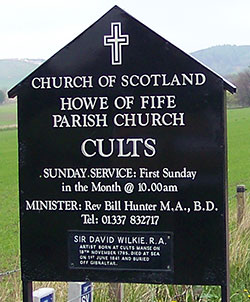 a living, working, museum exhibit, more or less unchanged over the last 220 years.
a living, working, museum exhibit, more or less unchanged over the last 220 years.
There had been a church on this spot since the thirteenth century, though the present building dates from 1793, after the roof of the previous church had collapsed. 
The Rev. David Wilkie, born 1738 in Ratho Byres, Midlothian, was educated at The Universities of Edinburgh and St Andrews; Licensed by the Presbytery of St Andrews 9th May 1770; Assistant first at Glamis and then served five years at Rescobie (must have been very familiar with the Hunters there as local lairds); Presented by the United College of St Andrews 24th November 1773 (either by or with the approval of Dr John Hunter, Professor of Humanity, St Andrews); Ordained as minister of Cults on 13th April 1774 and served the parish until 1812.
He married Isabella Lister from Pitlessie Mill in 1781, and they raised six children. The painting on the right shows the Reverend and his wife, painted by son No.3 Sir David Wilkie.
The father, Rev. David Wilkie, died on the 1st Dec. 1812 after toiling away at Cults for 38 years. Having now to vacate the manse, Isabella, his widow and Helen, the youngest daughter, moved down to London to stay with Sir David.
On the wall, on each side of the pulpit, are two handsome monuments in marble, one was erected by Sir David Wilkie, to the memory of their parents; and the other erected by Miss Helen Wilkie (later married Dr. William Hunter see below ) to the memory of her distinguished brother, Sir David.
Rev. Thomas Gillespie LL.D. (Glasgow 1824), born 1778 in Closeburn, Dumfries, was the replacement minister. Presented by United College, St Andrews, in March, and ordained Sept. 1813. Thomas married Elizabeth Hunter, daughter of Dr John Hunter, in 1809. (Dr. John Hunter LL.D. Professor of Humanity, taught at St.Andrews for 52 years, up until 1827, when he was appointed Principal of the United College of St. Salvador and St. Leonard. { an interesting family, more on them to follow, another time. })
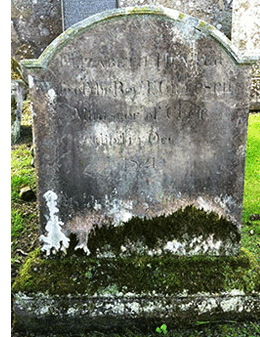
The couple were blessed with six children. Elizabeth died Oct. 1821 and is buried at Cults. Her rather sad and underwhelming gravestone shown on the right.
Very few men had greater versatility of imagination or power of satire; and few indeed could commit their overflowing thoughts more easily to paper, ready for the eye of the printer and the critic. There is a vast amount of his writings, both in poetry and prose, extant in the magazines of the day, as well as in the newspaper press of Scotland, particularly in that of Fife and Dumfries.
The Rev. Thomas Gillespie LL.D., was on 30th Sept. 1828 appointment as assistant and eventually successor to the Professor of Humanity in University of St Andrews; he died in Dunino on 11th Sept. 1844. ( Dr. Hunter LL.D. having died of cholera, on January 18, 1837, in the 91st year of his age. )
Dr Gillespie having been appointed assistant and successor to his father-in-law, that distinguished classical scholar, the late Dr John Hunter LL.D., Professor of Humanity in St Andrew's, in the year 1828, vacated the living of Cults, and settled in the city of St Andrew's. .. His immediate predecessor in the ministry at Cults, was the Rev. Mr. Wilkie, father of the late lamented, Sir David Wilkie and we have heard Dr. Gillespie condemn his own want of taste in having upon his entering to the manse unconsciously in the cleansing process, washed away many rude drawings from the walls of the nursery, the work of the infant painter. Like a kindred spirit, the Doctor had a great admiration of the genius of Wilkie and in the course of his pilgrimage in Cults, he collected many interesting anecdotes of Sir D. Wilkie's juvenile efforts and encouragements and which were communicatcd by him to Allan Cunningham and hold a place in that writer's last work, "The Life of Sir David Wilkie".
There is no direct connection found, so far, between the Rescobie/Burnside Hunters, Dr John Hunter's family, Dr. William Hunter of the Coldstream Guards or indeed the Rev. William Hunter, minister of Cults, presently (2017).
~ just coincidence

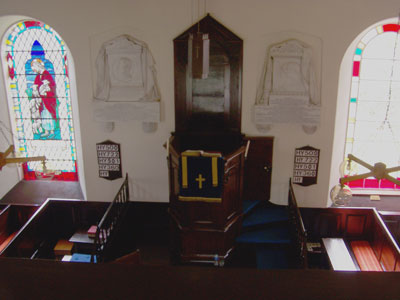
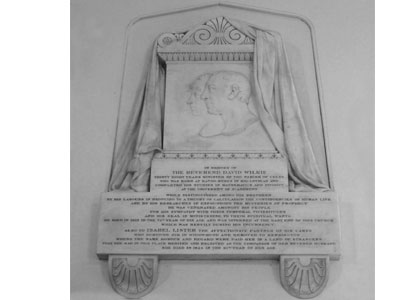
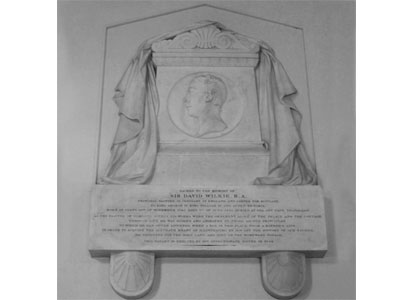
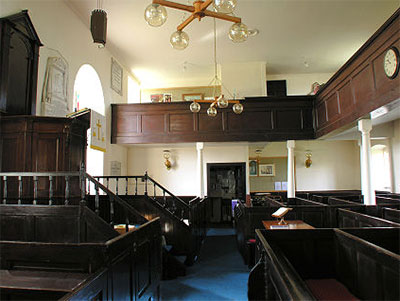

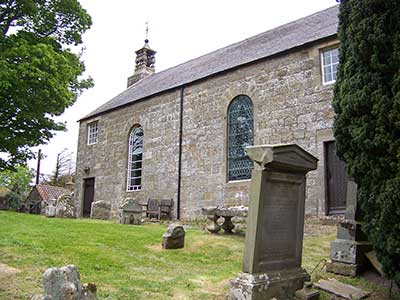
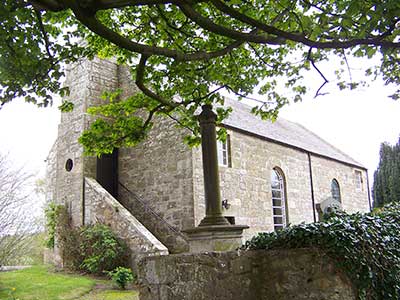
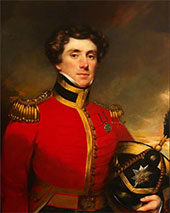
William was the great-grandson of Archibald Hunter, who was the younger brother of John Hunter of Long Calderwood (father to the famous John and William).
In 1814 he joined the Coldstream Guards as an Assistant Surgeon. Joining his regiment on 10th Feb. 1814. He served in the Peninsula in April that year, was present at the blockade of Bayonne, and believed to have been in Hougoumont in 1815, during the Battle of Waterloo. "Hougoumont was a part of the battlefield that Napoleon could see clearly and he continued to direct resources towards it and its surroundings all afternoon, in all 14,000 troops.."
He was also at the capture of Paris later the same year and remained in France, with the army of occupation until Nov. 1818, when the regiment returned to England.
In 1836, 4th Sep. he was promoted to Battalion Surgeon of the Coldstream Regiment of Foot Guards. Then in 1838, the Royal appointment, as mentioned above.
Then in 1838, the Royal appointment, as mentioned above.
His painting, was completed in 1840 and shows William in the uniform of Lieutenant Colonel wearing his Waterloo medal.
He is mentioned as one of the original Fellows of the Royal College of Surgeons in 1843.
June 18th 1844, he married Helen Wilkie, at Trinity Church in Chelsea, London. Helen was the sister of Sir David Wilkie, the famous artist. When the Rev. David Wilkie, her father, died, Helen and her mother had moved down to London to stay at her brother Sir David's house.
The following year Surgeon-Major William Hunter M.D. 2nd Battalion Coldstream Guards retired on half pay.
The couple happily lived out their days at Woodbank House in Largs, Ayrshire.
Helen Hunter died in 1870. The following year, 1871, William gifted the portrait of his wife, painted by her brother, to the National Gallery of Scotland, he died later that same year.
The following year, 1871, William gifted the portrait of his wife, painted by her brother, to the National Gallery of Scotland, he died later that same year.

They are buried together at Hailey Brae Cemetery in Largs, looking over the River Clyde to Cumrae and Bute.
.. archaeology can lead to the recovery of the lost and resuscitate memory, and it is here that we find another motive for an interest in Waterloo. The Centre for Battlefield Archaeology is currently engaged in a major archaeological project exploring the battle. Waterloo Uncovered is an international collaboration involving experts from a number of institutions and initially focussed on the remains of Hougoumont Farm, which was the scene of very heavy fighting throughout the day of the battle. The allied force that defended the buildings and surrounding ground was multi-national, including British and German troops. Among the regiments that played a key role in the defence was the Coldstream Guards, which won plaudits from Wellington for closing the gates of the farm against French attackers. William Hunter studied medicine at Glasgow University and went on to serve as an Assistant Surgeon with the Coldstream Guards. He was with the regiment during the battle, which probably means that he was at Hougoumont, helping to tend the many men injured as the fighting raged around him.
Several weeks ago archaeologists working with Waterloo Uncovered excavated a saw blade from the area of the walled garden at Hougoumont. It has not yet been confirmed, but this might be a surgeon’s saw used during the battle. Unprovable as it always will be, it is nonetheless tempting to speculate whether Hunter, a member of the Glasgow University community, wielded that frightening instrument as he did his bloody work.
Paterson in his "History of Ayrshire" says, that the family of Hunter of Long Calderwood are supposed to be descended from Francis Hunter, third son of the 19th Laird of Hunterston.
Inquiries made by myself of the late Col. Hunter-Weston proved that no record of this supposed descent exists at Hunterston, although his father-in-law, the late Mr. Robert Hunter of Hunterston, in the year 1865 went fully into the whole matter, with the assistance of legal and genealogical experts, and also with the help of the late Dr. William Hunter, of the Coldstream Guards, a direct descendant of Archibald Hunter, uncle of the celebrated brothers, to try to ascertain any information as to the connection of the two families; but none was forthcoming.
This supposed descent must presumably have been mentioned in the original obituary notices given in the papers of the day, and so the statement has been perpetuated ever since. Perhaps some of your readers maybe able to throw a light on the subject.
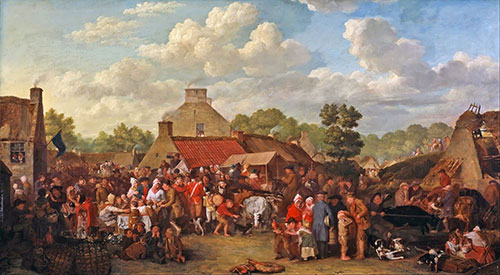
David was born on the 18th November 1785 and brought up in the manse of Cults, under a mile from the village of Pitlessie where his mother came from. As a boy, David Wilkie went to Pitlessie village school.